As I climbed down the steps, walked carefully across the muddy grass and up into the castle I found myself staring through this hole in the wall, a window on the world. I'm not sure what attracted me to this scene, but I stood there, studying the wall and peering through the hole at the rocks and ocean behind it, then focusing again on the wall. A wall that had stood the test of time, almost 500 years. How many sets of eyes had peered through this window? Some no doubt looked out with fear in their eyes as the castle was besieged in 1551 and again in 1555, others in awe of the beauty and power of the ocean they gazed upon. Perhaps lovers peered out upon their beloved.
I captured this image as a reminder of the old and the ancient. The walls are old, the ocean and rocks you can see through the window are ancient, millions of years old. There are stories in this place, unknown stories, stories lost to history, the stories of people who are no longer known. Yet here I stand looking through this window, reflecting on life, thinking of the past while being in the present. Aware of the old, awed by the ancient power of waves and stone. I wanted to capture that moment.
What do you want to see when you look out the window?
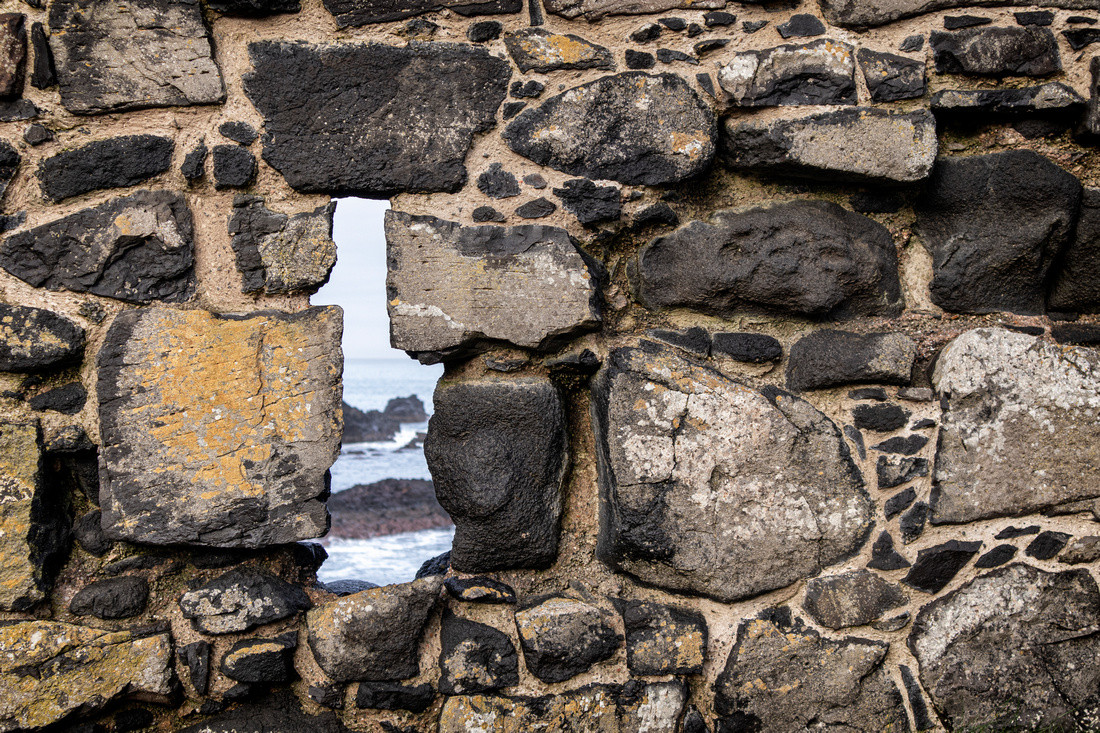 Kinbane CastleThrough The Window
Canon EOS M50: 35mm, 1/80, f5.6, ISO 100
Kinbane CastleThrough The Window
Canon EOS M50: 35mm, 1/80, f5.6, ISO 100
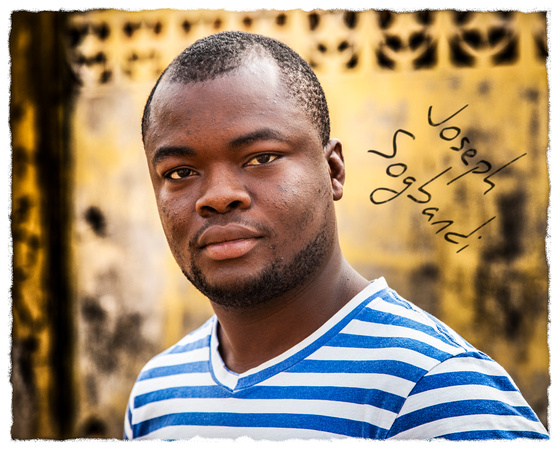
This is a man to whom I have trusted my life.
When I first visited Sierra Leone in January of 2018 I was asked if I would comfortable riding on the back of a motorcycle. I sensed that "no" was not an option, so I said, "yes." Joseph became my driver. I hopped on the back of his bike and the two of us took off, travelling around Tikonko chiefdom and the city of Bo.
At first it was a white-knuckle experience for me as I gripped tightly to the bar behind me. Over time I learned to relax a little more and began to enjoy the journey. Cocooned inside the helmet I allowed myself to trust. I told myself that there was no point in worrying or being anxious because I had no way to control anything that was happening. I was along for the ride so I might as well enjoy it.
On my return trip to Sierra Leone this past January I was thrilled to learn that Joseph was available to provide my transportation. So, for two weeks we travelled the dirt roads of Tikonko and the city streets of Bo. My life in his hands, trusting my friend.
We live in culture built on mistrust and suspicion. This leads to a culture of fear. We think of trust as something that must be earned before it is given. I believe we have it wrong. We should trust first. Joseph reminded, or maybe taught, me the importance of trust. I had to trust someone I didn’t know, as a foreigner in a new land.
Some may say I’m being naïve, I’m OK with that. I’d rather start with trust and be let down than start from suspicion and force someone to prove themselves. I think this is the way of love, the way of Christ.
]]>
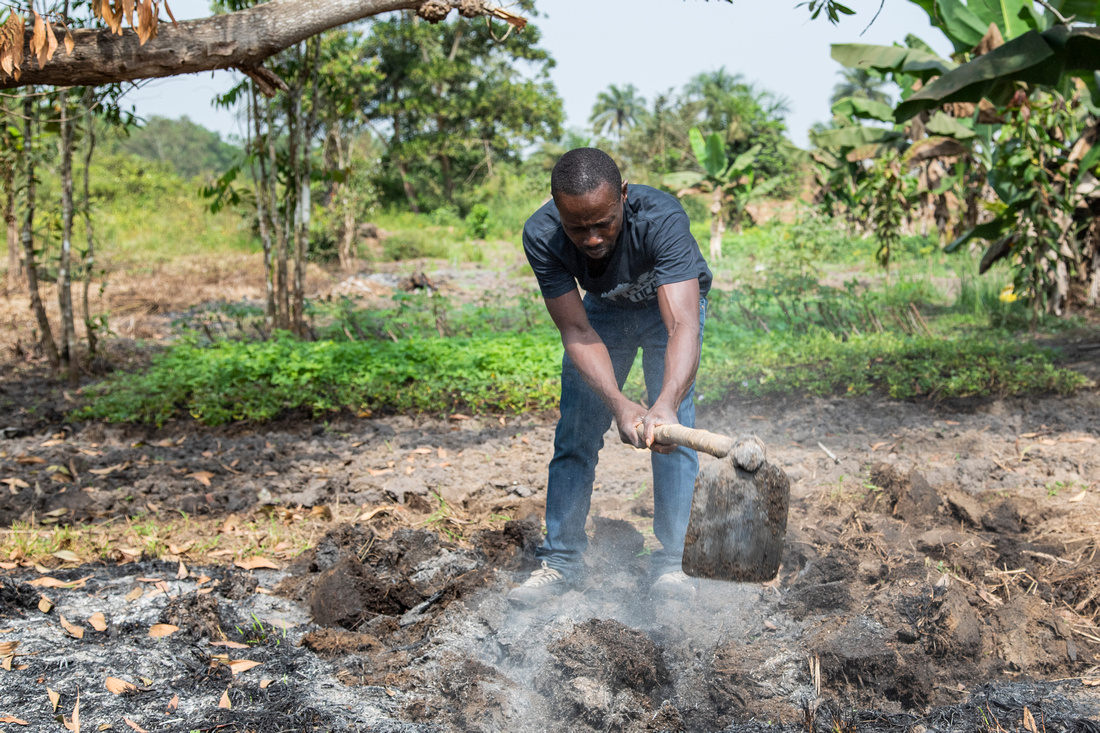 RHCI is fortunate to have Patrick farming the land. He is the son of a master farmer and learned most of what he knows from his father, who was tragically killed during the civil war. Here you can see him preparing the land for planting. RHCI has a power tiller but there are so many roots and stumps in the ground that he says he will need to hand till the ground for at least a couple of seasons before he can use the power tiller.
RHCI is fortunate to have Patrick farming the land. He is the son of a master farmer and learned most of what he knows from his father, who was tragically killed during the civil war. Here you can see him preparing the land for planting. RHCI has a power tiller but there are so many roots and stumps in the ground that he says he will need to hand till the ground for at least a couple of seasons before he can use the power tiller.
Even though we visited during the dry season, a time of year when very little is growing, Patrick took advantage of shady spots to plant casava, beans, and peppers. He would water twice a day. Getting his water from a nearby swamp, he would dig a hole three or four feet deep, allow it to fill with water, and then use that to fill watering cans over and over and over again. It is hard manual labor but it is making a difference in the community.
There are many other crops that are growing and will produce during the rainy season, oranges, pears, peanuts, papya, and mango. In 3-5 years coconut should be available and we are already seeing crops of banana and pineapple.
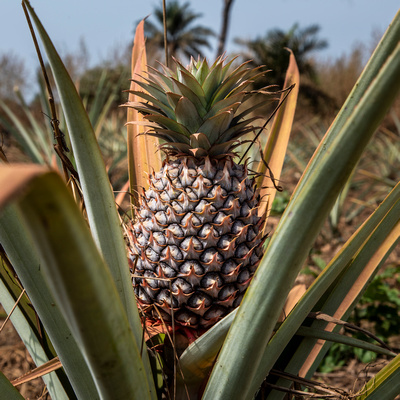

Food security is a major issue in developing nations. In Tikonko, the planting season begins in May and the harvest in September. During the months of July and August access to an adequate food supply is a challenge for many people and hunger becomes a reality they have to face. It doesn't have to be this way. We live in a world with an abundance of resources. The problem is in distribution.
]]>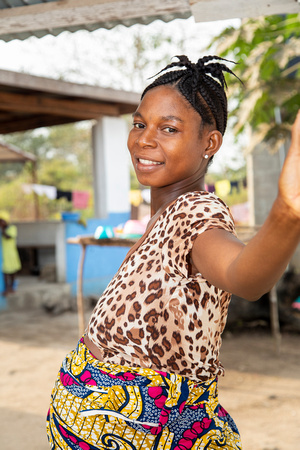
This morning I spent time with some of the women staying at the birth waiting home. Thanks to the work of RHCI they are being provided with every opportunity to have a healthy delivery and raise healthy children.
Tiangay is from the Julien community in Tikonko where she lives with her husband and three other children. Her husband works in the Diamond minds, hoping to earn enough money to support the family. As Tiangay waits to give birth she is grateful for the opportunity she has to be at the birth waiting home.
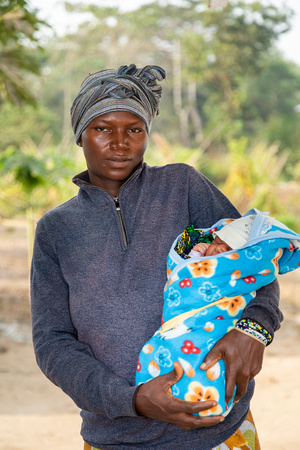 Then there's Sowoh from Kigbai. She gave birth to her son three days ago and this afternoon we drove her back to her home with her healthy new born baby boy. He is her fourth child but tragically she lost a son of six to a sudden to an unexplained death. She was looking forward to getting home and the kids of the village ran out to greet us as we pulled up at her home. She says, "I am so happy for this opportunity we have in Tikonko chiefdom to help the women to stay here and have healthy delivery."
Then there's Sowoh from Kigbai. She gave birth to her son three days ago and this afternoon we drove her back to her home with her healthy new born baby boy. He is her fourth child but tragically she lost a son of six to a sudden to an unexplained death. She was looking forward to getting home and the kids of the village ran out to greet us as we pulled up at her home. She says, "I am so happy for this opportunity we have in Tikonko chiefdom to help the women to stay here and have healthy delivery."
So, you might ask why I would be mad. Actually, pissed off is a better term. I'm really upset today!
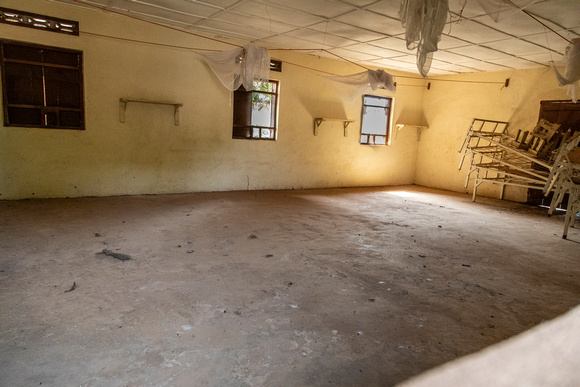
Later this afternoon we went to Gondama where I met Kaba, the area midwife. She is a woman who is passionate about her work. She showed me where they used to have a birth waiting home. It was built by M.S.F. (Doctors Without Borders), but after their three year contract was up they just left and there was no funding to keep it open. Kaba explained, what I already knew, that if there is nowhere for them to stay then women are more inclined to give birth in their villages, particularly during the rainy season, so if there are any complications there is no help for them and the mom's die. The sight of the empty building broke my heart.
But that's not what's pushing me over the edge today.
We returned to the clinic and spent some time talking about malnutrition. They see a large number of malnourished children and she went over some of the numbers for us. It was striking that they recorded no cases in April or May of this year. So we asked why? The answer was they had no food to offer the malnourished children so no one came and no cases were recorded!
Apparently UNICEF used to provide them with Wheat Flower that they could send home with the families to help them get a start on providing proper food for their kids. However UNICEF determined that the kids in this region aren't "vulnerable enough" and have taken their resources elsewhere.
Now I'm getting mad! There's enough resources in our world for everyone. Distribution is the main issue. Kids are dying because we can't get our act (I wanted to use a stronger word here but thought I'd keep it family friendly) together. Now I'm steaming.
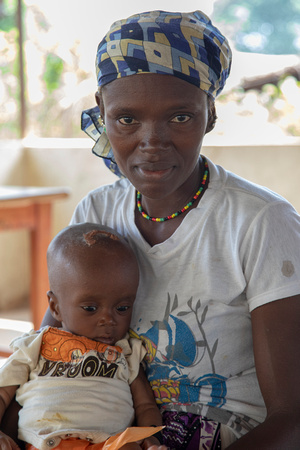
As we are talking she begins to tell us that Sannay's nine month old son is severely malnourished and needs to be in the hospital in Bo. But for a number of reasons she can't/won't take him. There is nothing more the medical folks at the clinic can do. I asked Sannay if I could take her picture. It's not a great image but it's seared in my mind that this little boy is on the brink of death from one of the most treatable and preventable causes of death in the world. This is why I'm fuming!
Now the question is what do I do with my passion? Turn it into action, demand justice in the world and continue to work with RHCI and other groups that seek to bring hope through tangible action to folks like Tiangay, Sowoh and Sannay.
]]>When I saw this young man just hanging out the window I thought it would make a great photo. It's my favorite shot of the day.
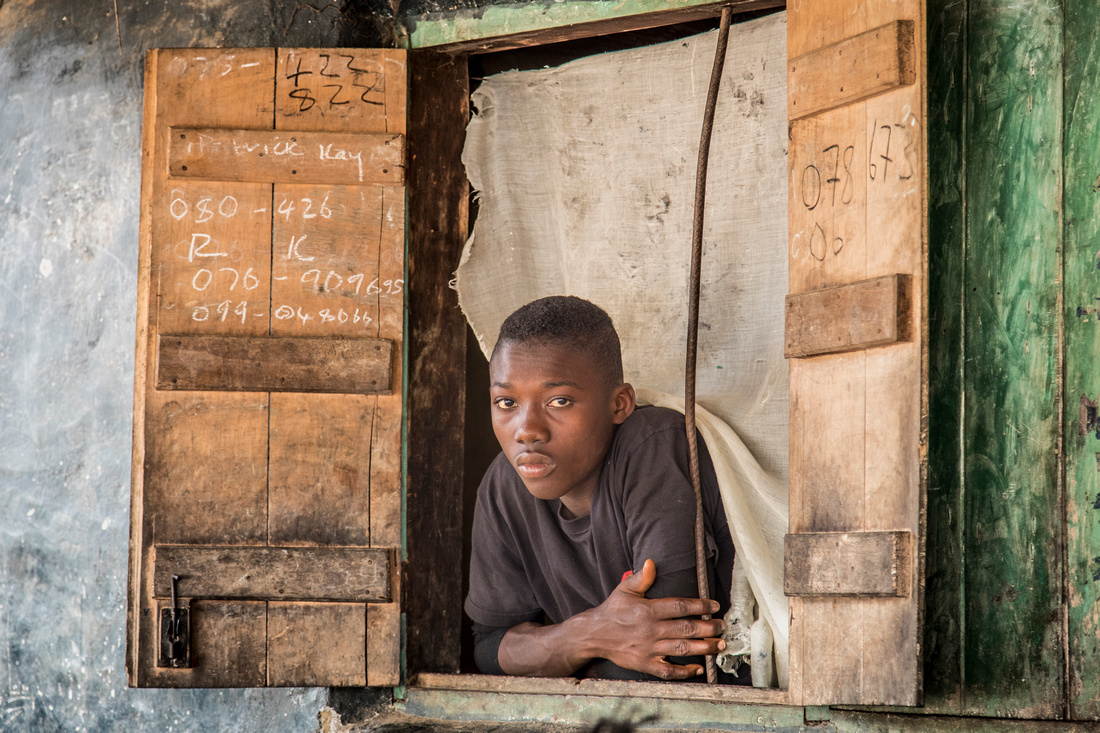 Swaliho Kamara is a coffee farmer. He is turning the beans while they dry. In this part of the country subsistence farming is the way of life for many people. They hope to make enough money and have enough food to get through the year. Almost everything we take for granted would be considered a luxury here. Thankfully World Vision and other NGOs have done an excellent job of digging wells so people have access to clean water.
Swaliho Kamara is a coffee farmer. He is turning the beans while they dry. In this part of the country subsistence farming is the way of life for many people. They hope to make enough money and have enough food to get through the year. Almost everything we take for granted would be considered a luxury here. Thankfully World Vision and other NGOs have done an excellent job of digging wells so people have access to clean water.
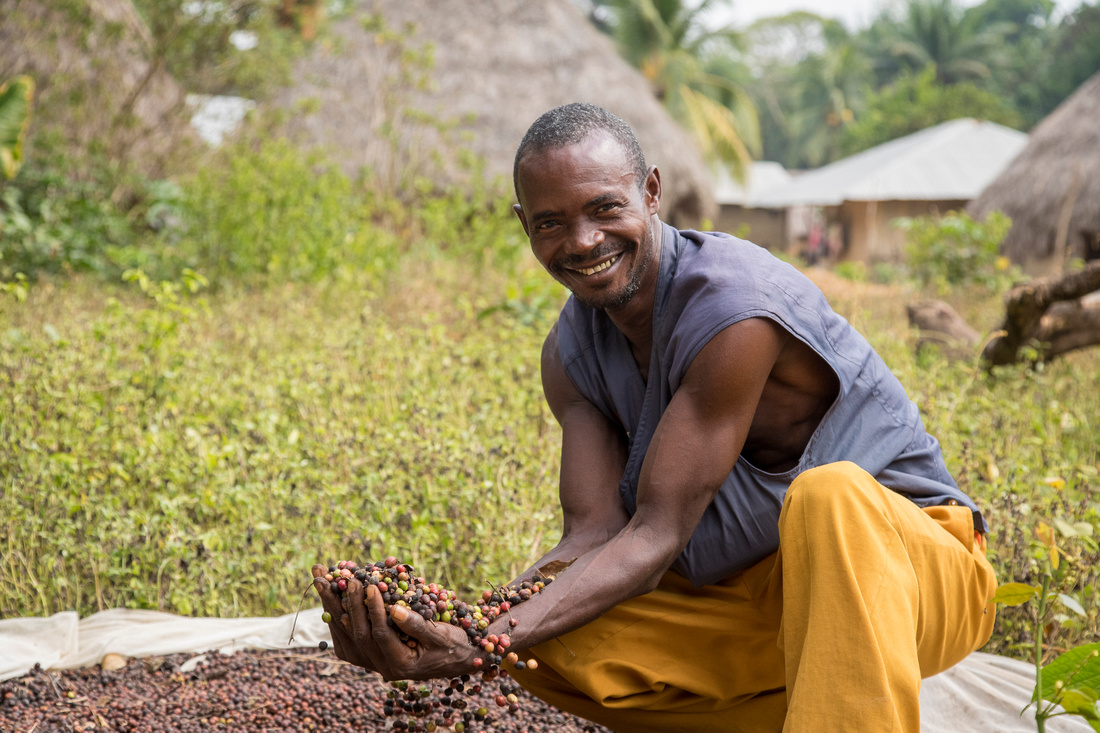 When we arrived in Sebehun Tarbay we were warmly welcomed and this young man who was determined that we should all enjoy fresh coconuts. The picture doesn't do justice to how tall the tree was. The coconut water was fantastic.
When we arrived in Sebehun Tarbay we were warmly welcomed and this young man who was determined that we should all enjoy fresh coconuts. The picture doesn't do justice to how tall the tree was. The coconut water was fantastic.
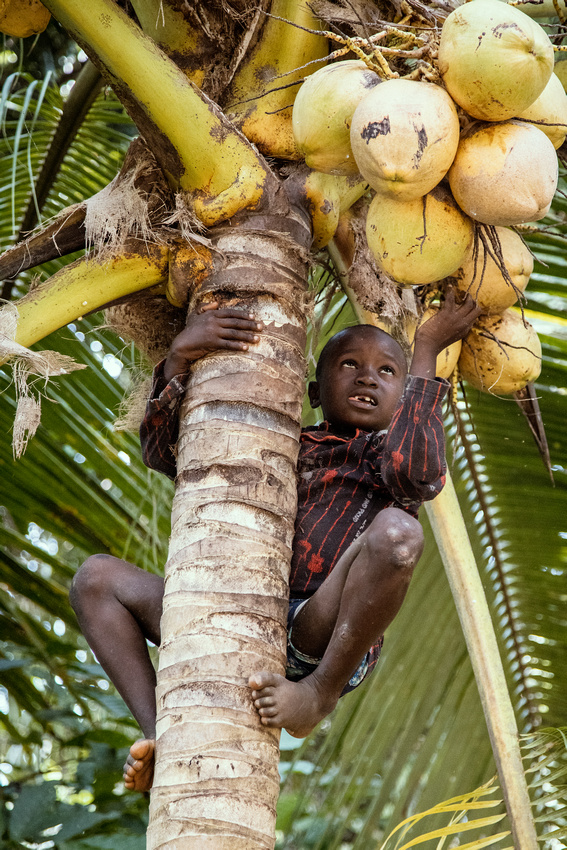
We also visited the village of Kasama. I popped the drone up in the air., which is something new to me as I only acquired it at Christmas. At one point I thought I was going to lose it as I struggled to figure out which direction it was flying! But I managed to grab this fun aerial shot of the village. I'm sure there will be more to come.

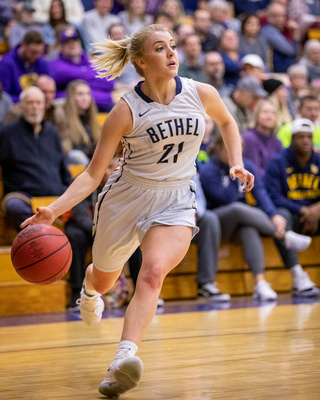 I was recently asked how I managed to get non-blurry basketball photos, so I thought I’d write a piece on how I shoot and what I look for. Some of the gyms I shoot in are fairly well lit but most of them are just horrible. This means I have to make the necessary adjustments to my camera settings in order to get an image that is both in focus and sharp. With modern digital cameras this means achieving a shutter speed of at least 1/800 second but preferably 1/1000.
I was recently asked how I managed to get non-blurry basketball photos, so I thought I’d write a piece on how I shoot and what I look for. Some of the gyms I shoot in are fairly well lit but most of them are just horrible. This means I have to make the necessary adjustments to my camera settings in order to get an image that is both in focus and sharp. With modern digital cameras this means achieving a shutter speed of at least 1/800 second but preferably 1/1000.
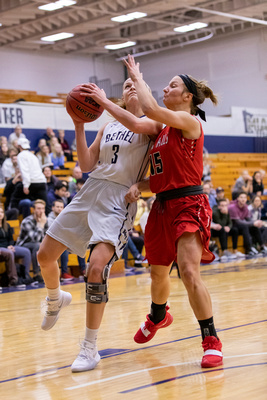
So how do we get there?
The first thing I do is set my camera in manual mode. The lighting in a gym is constant so once you have the exposure set there’s no need to change it. Next I need to dial in the right exposure setting which means balancing shutter speed, aperture, and ISO. ISO will be my main variable in this equation. After setting the shutter speed I dial in the aperture, I like to use my 70-200 f2.8 lens and set it at f3.2, as that provides a little more
depth of field than f2.8. From there I dial in the ISO in order to get a properly exposed histogram and that usually means setting the ISO somewhere between 3200 and 8000, although last weekend I had to crank it up to 12,800 (yes some gyms are terribly lit!).
I have my camera set on continuous auto focus, AI Servo on my Canon camera, and the shutter release is set on high speed continuous shooting.
Now it’s just a question of sitting down and learning how to follow the play and frame the shot!
]]>
I've spent a lot time reflecting on the rising level of racial tension in America and wanted to find a way to convey people of different skin color coming together. All my initial ideas felt too much like the cover page of most college catalogues! My desire was portray unity, love, intimacy, and a sense of "togetherness."
Last October I officiated at the wedding of Amy and Juvitus and I thought they'd make the perfect couple for this project. When I approached them about participating they thought it was a wonderful idea and following the shoot we grabbed a couple of drinks and chatted about some of the racial issues we face in our society.

 I liked how the silhouettes obscure the color of their skin, revealing only the reality of two people connecting with one another.
I liked how the silhouettes obscure the color of their skin, revealing only the reality of two people connecting with one another.
The next couple of images portray a sense of reaching out to engage with the other person, recognizing that at times skin color creates false barriers between people. However, when we have the courage to reach out to people who may appear different to us, we will discover the truth that we are all part of the human race, we all share very similar concerns about life, we are all created in the image of God and have an inherent sense of dignity and worth that comes with that reality.
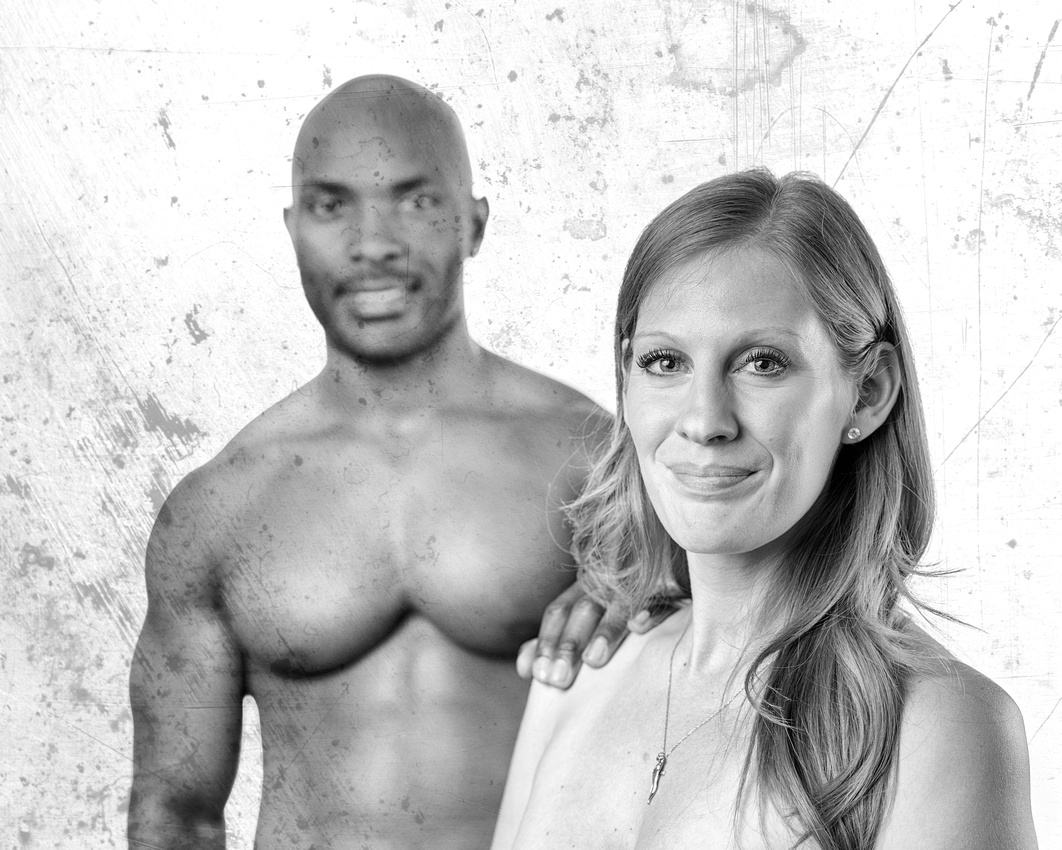
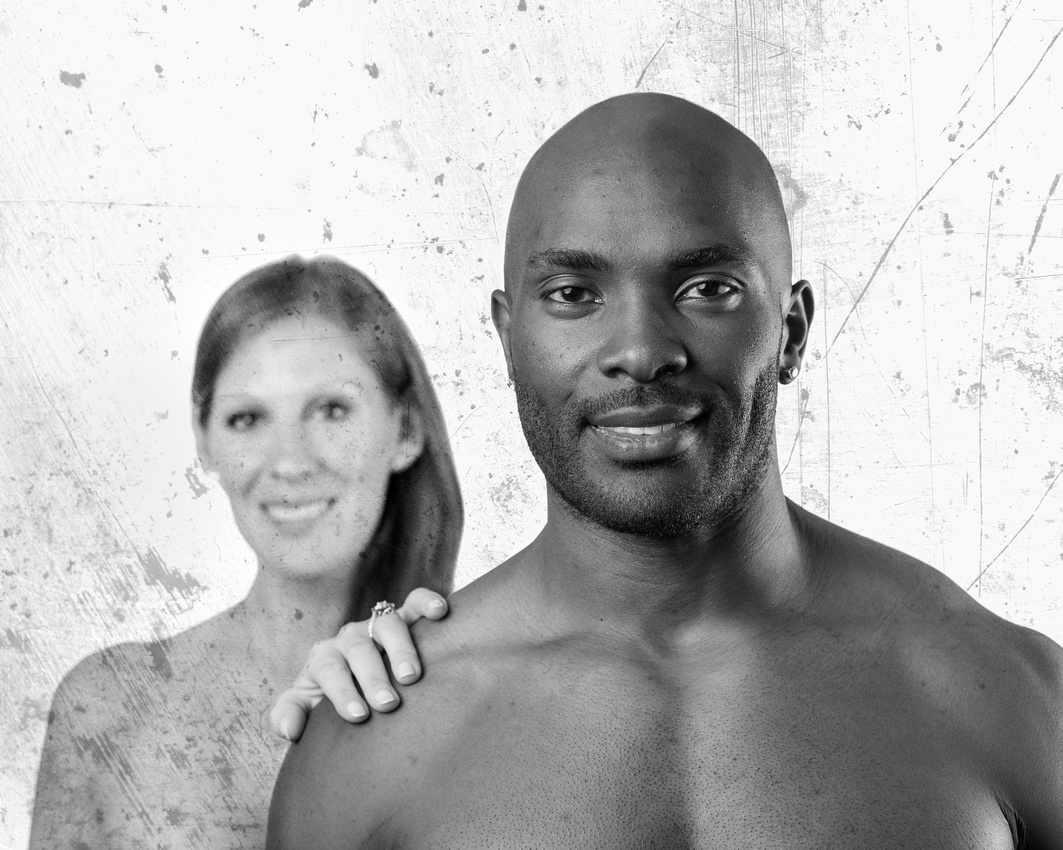
Ultimately love is at the center of this relationship, two people who decided to give their lives to one another and the truth is we are all stronger together. Together we must learn to stand up to the injustice of racism in our world.
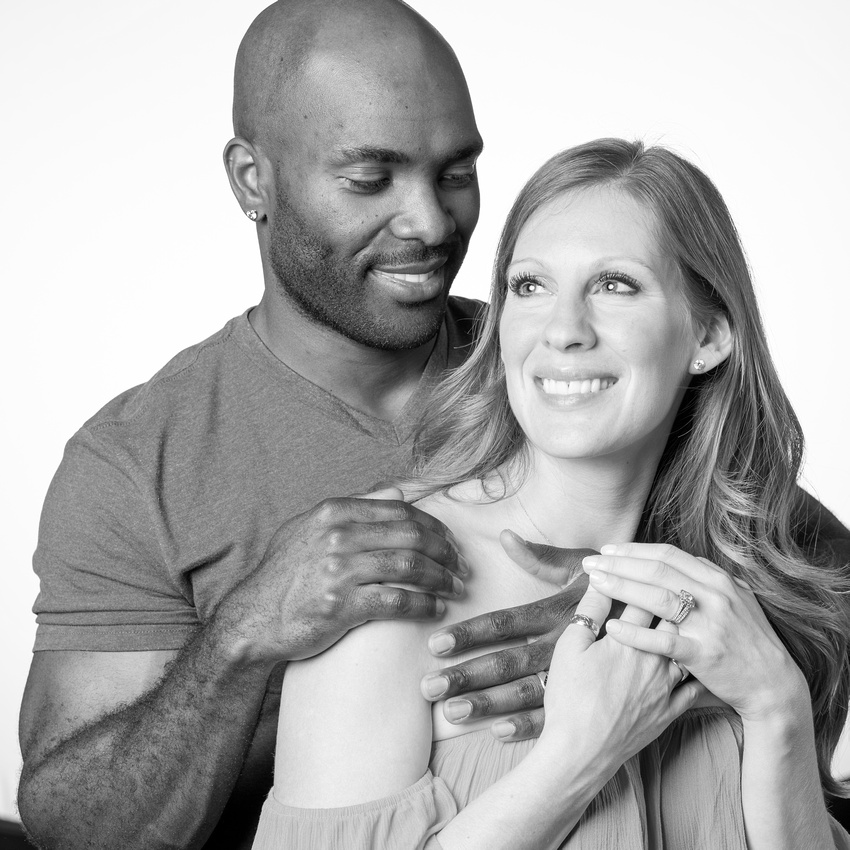
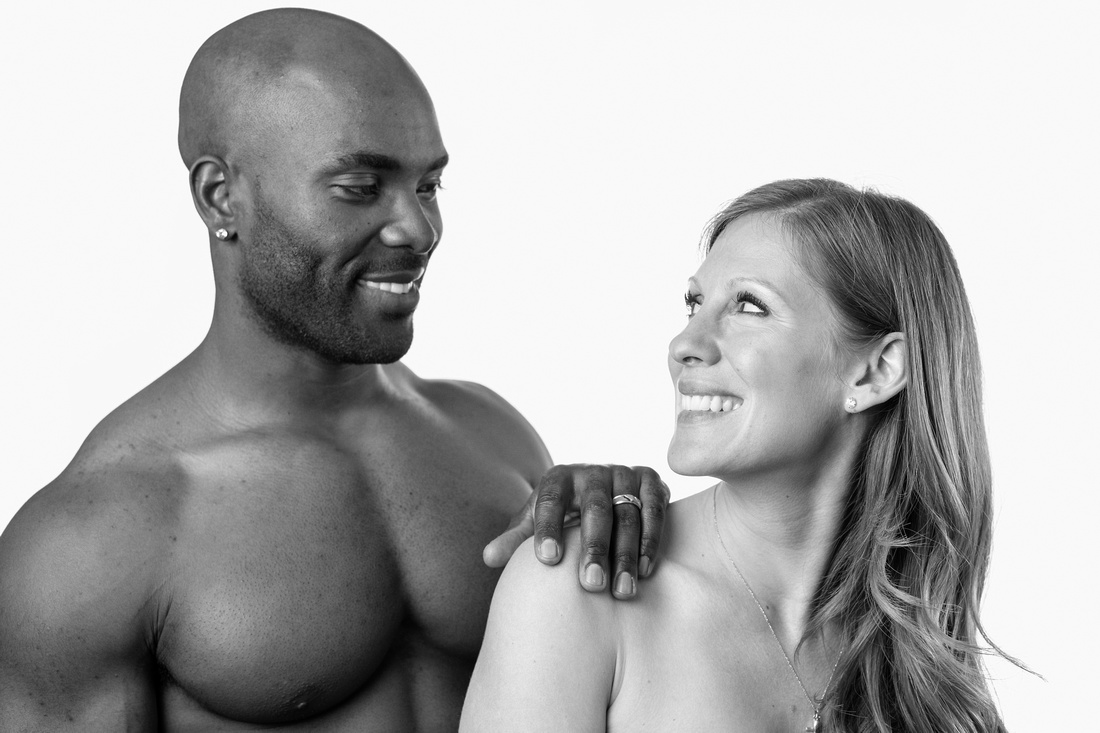
]]>
I was quick to tell both of these men that Jesus was most definitely not a white man. I explained that he came from the Middle-East and would have looked more like the Lebanese people that come to the city of Bo than a pale European like myself.
 I added that God doesn't have a skin color. God incarnate in Christ had a skin color based on the region of the world into which he came, but all people, of all skin colors, are created in the image of God and have equal value and dignity in the eyes of God.
I added that God doesn't have a skin color. God incarnate in Christ had a skin color based on the region of the world into which he came, but all people, of all skin colors, are created in the image of God and have equal value and dignity in the eyes of God.
Where did the idea of a white Jesus come from?
The local Catholic church was locked so I took this photo from through the grates at the back of the church. The sanctuary is sparse by western standards but on the left is a statue of the Madonna and child and on the right is a print of the Madonna and child. Here in the heart of a rural community in Sierra Leone sits a western image of a white Jesus.

The first Christian missionaries to Sierra Leone date back to the early 1600's. You'd think that by 2018 they'd have figured out a way to make it clear that Jesus wasn't a white European. Apparently not. There's still a lot of work to do if we ever hope to accurately represent Christ in the world today.
]]>While being here in Sierra Leone I have tried to get the name of every adult I have photographed as they all have stories to tell. It's a little different with the children, they all want their photo taken so I simply oblige and move on.
In one village this woman approached me as I was taking photos of the Rural Health Care Initiative Community Health Workers and asked me to take her photo. I took the photo and moved on. That moment has haunted me over the last few days. Who was she? What is her name? What story does she need to tell the world? I don't know.
It struck me that I could ask to go back to her village and find her, and learn her name and story. However I have chosen not to. Why? Because this photograph will forever serve as a reminder of how important it is to learn someone's name and listen to her story.
]]> These three women are committed to helping improve health care for the pregnant women and their children. They are being trained by Rural Health Care Initiative to provide quality care for the women and children in their village.
These three women are committed to helping improve health care for the pregnant women and their children. They are being trained by Rural Health Care Initiative to provide quality care for the women and children in their village.
(Aside: This is the preachy part)I believe that quite often we romanticize life in the rural villages of the developing world. When we do that it might help raise funds for the N.G.O.s that are working in those areas but the truth is that life is hard in these areas. We dare not give as charity or to justify our own exuberant lifestyles in the western world. Rather we must give because we have been blessed to have the resources to help others. We must not give out of guilt, as guilt is a poor motivator. We must not give out of pity for the people here are not to be pitied, they are a wonderful, welcoming, compassionate and caring people. Rather we must support these fine folks our of gratitude.
Bono said that an accident of longitude and latitude should not determine whether someone lives or dies. He is correct in that assessment. However, it is also true that an accident of longitude and latitude should not become a reason for an exuberant lifestyle at the expense of others. (Aside over)
 Then there's Peter. Peter works as the principle of the village elementary school. They currently have about 50 students attending the school. He is also responsible for some of the teacher training. When he's not working at the school Peter serves the local Catholic church as a Catechist. I had to ask what that was and he explained that because there is only priest who serves several villages (he happens to be a white guy so many of the kids called me "Father") on the 2 or 3 Sundays a month when the priest is absent Peter is the one with the responsibility to officiate the Mass. Peter's school is part of the World Vision Sierra Leone's Area Development Program for Tikonko. World Vision Hong Kong has been partnering with World Vision Sierra Leone since 2006 with a focus on Child Sponsorship, savings program and their WASH program.
Then there's Peter. Peter works as the principle of the village elementary school. They currently have about 50 students attending the school. He is also responsible for some of the teacher training. When he's not working at the school Peter serves the local Catholic church as a Catechist. I had to ask what that was and he explained that because there is only priest who serves several villages (he happens to be a white guy so many of the kids called me "Father") on the 2 or 3 Sundays a month when the priest is absent Peter is the one with the responsibility to officiate the Mass. Peter's school is part of the World Vision Sierra Leone's Area Development Program for Tikonko. World Vision Hong Kong has been partnering with World Vision Sierra Leone since 2006 with a focus on Child Sponsorship, savings program and their WASH program.
Peter's school has a set of latrines for the students provided by World Vision that helps the whole community in learning and developing healthy sanitation practices. Something that we, western world dwellers, take for granted but is not as clear cut in a village with no running water, sewer system or electricity.

Another program World Vision sponsors is a savings program. Each week members contribute a small amount of their earning to the program in order to develop a savings account that they can draw from when times get tough. The program is part of the investment in the economic future of the area and well being of the people. Zainaba is a member of the savings group in Gabalehun.
After leaving Gabalehun we rode to the village of Kassama. A beautiful village sitting on the edge of the Kiewa river. In this village I met another member of the savings program, Hawa. She makes her living by making palm oil. It is a labor intensive process that requires roasting/burning the beans from which the oil is derived and then pounding it to pulp that is then heated and strained to separate the oil so it can be sold in the market.
 One last person that I want to introduce you too is Kinnie. Kinnie lives in Kassama and makes his living on the river. About four times a day he makes a trip downstream to dig sand from the river bed. With a full boat he makes his way back upstream where the sand is deposited on the river bank. This sand is then sold for use in the construction industry, primarily in the cities of Freetown and Bo.
One last person that I want to introduce you too is Kinnie. Kinnie lives in Kassama and makes his living on the river. About four times a day he makes a trip downstream to dig sand from the river bed. With a full boat he makes his way back upstream where the sand is deposited on the river bank. This sand is then sold for use in the construction industry, primarily in the cities of Freetown and Bo.

The original idea for this image came to me in late 2016 as I reflected on the tensions created in Shusaku Endo's novel Silence and Scorsese's movie adaptation of it, along with some of the song lyrics written by my friend Bryan Gormley. My hope was to create an image that juxtaposed the oppositional nature of the sacred and profane, saint and sinner, violence and peace.
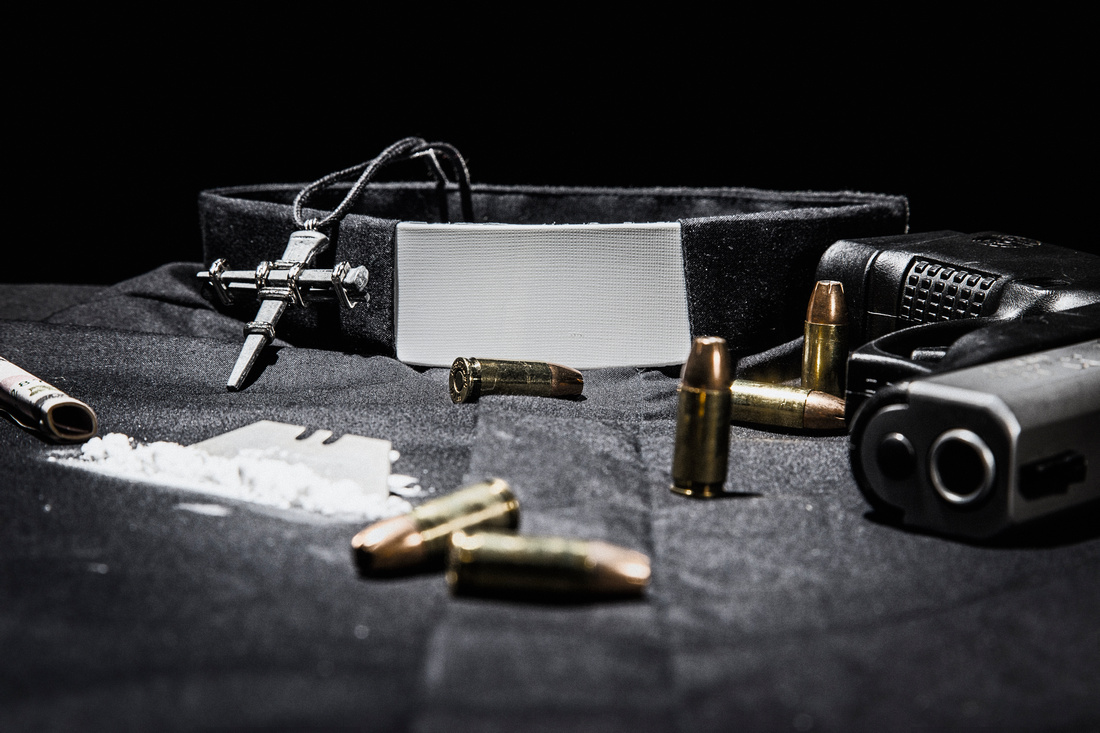 Broken
Broken
The theology behind this image reflects the reality that we live in a broken world, that innate sense that things are not the way they are supposed to be. Christians refer to this brokenness as sin.
The apostle Paul wrote, "Here is a trustworthy saying that deserves full acceptance: Christ Jesus came into the world to save sinners—of whom I am the worst" (1 Timothy 1:15). What allows him to say this is not a false sense of humility but rather an acceptance of reality. The more Paul came to know and understand the holiness of God the more clearly he came to see the huge gulf that existed between his best and who God was and is in Jesus Christ.
Tragically too many Christians today take a position in which they pretend to be "better" than other sinners and are often heard castigating people for their failures. Yet Christians, more than any other group, should be the first to declare that sin is the great leveler of all people, we are all guilty. We all have the same starting point as part of humanity, created in the image of God, but due to sin our humanity is fractured and broken. So everyone has the same need to receive forgiveness and experience the grace of God.
]]>It is not an accident that this blog is tied to my photography website. They (whoever "they" are) say that photographers should have a blog so here's my photography blog on my photography website. If you're looking for this to be a blog discussing the technical details of the images or a storied account of photo shoots then you may be disappointed. As a pastor, who believes that God is active in all areas of our lives, it is my intention to use this photography blog to speak into the heart of the human condition from a Christian theological perspective while illustrating the conversation with the images I shoot.
There are already seven posts here on this page. They are from my series, "Created in God's image: Portrait of an immigrant" and reflect the reality that all people bear the image of God and have a story to tell that is worth listening to. My next post will be focused on an image I shot last February and will focus on the brokenness of our humanity.
]]>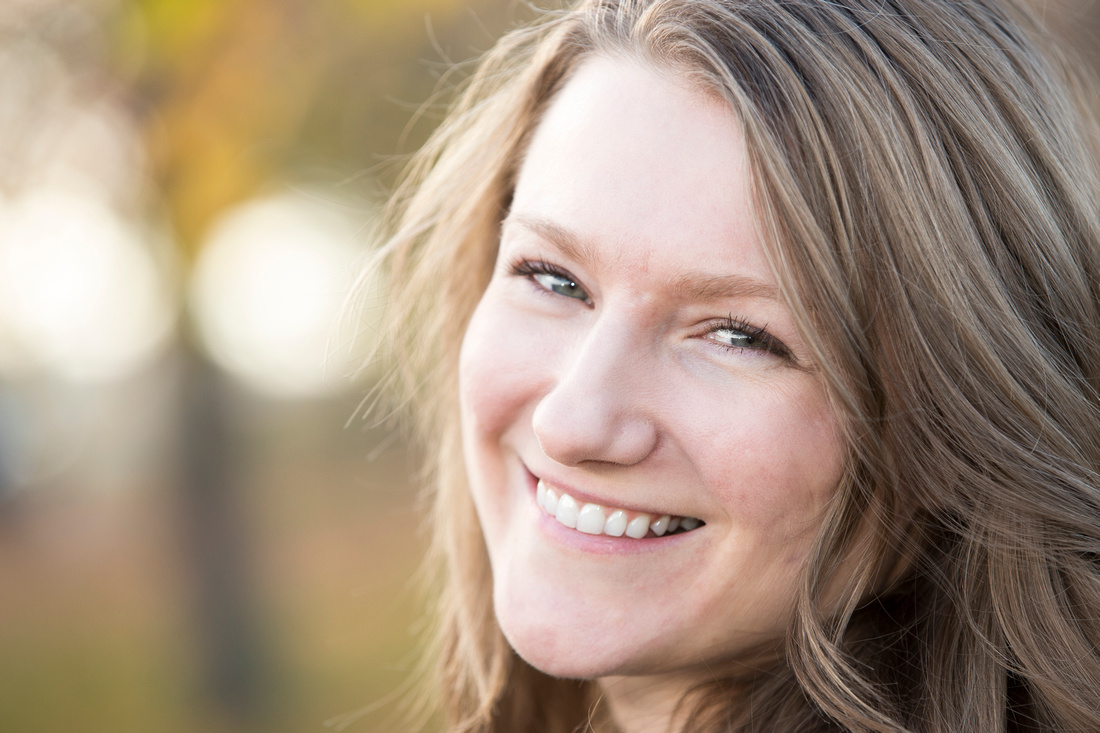
Anna is a Russian immigrant. After several years of waiting Anna’s family emigrated to the United States in 1996. Anna, the second of three children, was twelve years old when her family arrived in Illinois. She said, “It was hard, but at that age you make friends fast.” She remembers the move being more challenging for her older sister who was already a teenager at the time.
Born in St. Petersburg, Russia, Anna said she enjoyed a “happy childhood.” She played with her friends and attended the Russian Baptist church without any concerns of persecution. She was educated at the local public school; she also attended a music and an art school. It was at art school that Anna began to find the focus and passion for her career.
Anna’s family moved to Minnesota. While attending high school she began working for a photo studio where she learned the art of portrait photography, eventually becoming a trainer for other photographers. Anna continued her education at the University of Minnesota where she focused her study on art. It was here that Anna would refine the artistic vision that brings to her photography.
Reflecting on her life in America, Anna says she loves the U.S.A. with its respect for other cultures and religious freedom. At the same time she values her roots and heritage as a Russian immigrant and, like many first generation immigrants, feels a there is a small disconnect in her life that others cannot relate to her childhood.
Anna has found her niche in wedding and portrait photography preferring to shoot with a medium format, film camera. This allows her to create a look and feel that is slowly disappearing in the world of digital photography. She notes how she is, “Passionate about what I do,” and “enjoys capturing emotions.” This is evident in the beauty of her art, which can be viewed at www.annagrinetsphotography.com. It is also apparent in the way she comes alive when sharing about her art. Anna believes there is joy to be found in “letting your creativity out.”
Viewing her art as a means of, “helping people,” she values the importance of connecting with and getting to know her clients. She hopes that through her interactions with them they will, “see the love of God through of me.”
Aesthetics and beauty are important elements in finding true enjoyment and pleasure in life. Through her work, Anna is able to bring joy and pleasure to the world.
]]>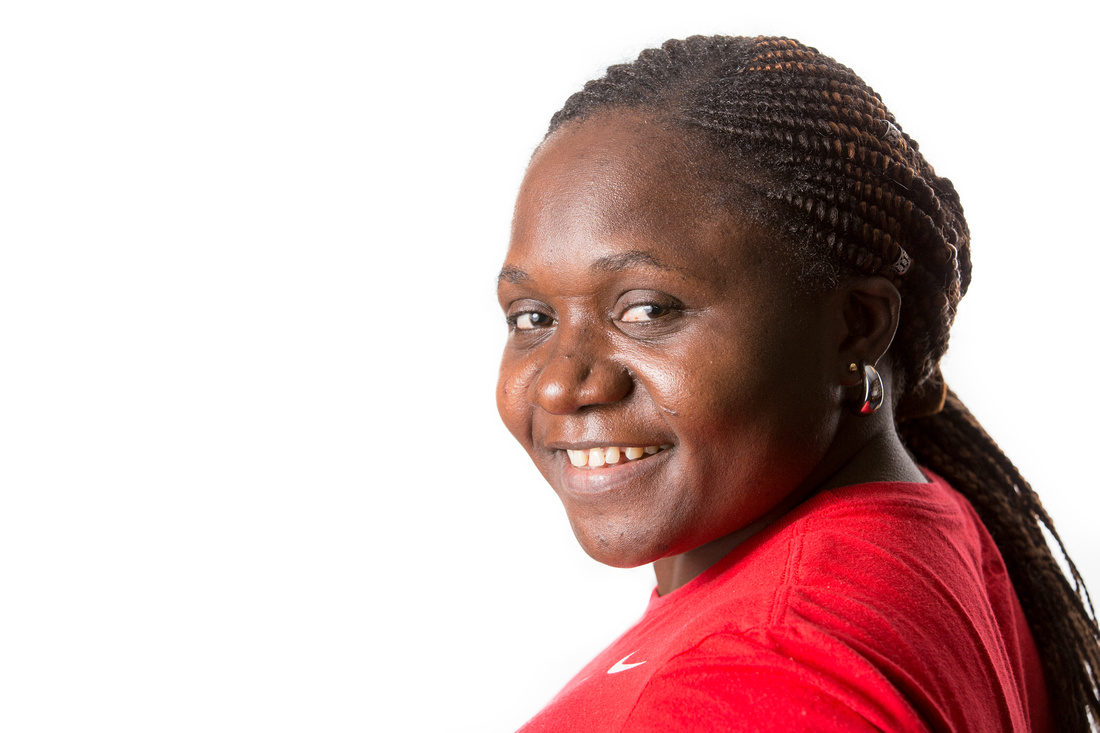
Jenipa is an immigrant from Cameroon. She was raised in a rural area as the second of six surviving children born to her mother. As a teenager Jenipa moved to the city and lived with her brother’s mother-in-law while she obtained her High School education. After graduation she began working as a housekeeper making about $60 a month. That same year her brother moved to the United States.
It was never Jenipa’s plan to leave Cameroon but after her brother’s move she put her name into the lottery for admission to the U.S.A.. A year later, in 2010, her name was drawn. She was now eligible to become a U.S. resident. In June of 2010 Jenipa arrived in America.
Jenipa began working in a group home and found that she cared deeply for the needs of others. In 2011 she graduated with her associates degree from Century College before completing her Bachelor’s degree in Social Work at St. Scholastica. Following the completion of her social work degree Jenipa continued her work in group homes now as contract case manager. She currently carries a caseload of about forty group home clients with another twenty-five vulnerable adults who, at this time, don’t qualify to live in a group home.
Making a life for herself in America hasn’t always been easy for Jenipa. She hasn’t been back to Cameroon since she arrived in the United States and openly shares that she’s, “missing home so much.” As the mother of a sixteen month old son she longs for her own mother and siblings back in Cameroon to be able to meet him. He is the only grandson in the family.
With her younger siblings back in Cameroon Jenipa, like so many immigrants, has made it a point to send financial help back to her family in order to pay for the education of her siblings. She has a passion for education and is hopeful that it will be a way for her siblings to find access to opportunities that would not otherwise be open to them. She says she tells them, “If I’m sending you money to go to school you’d better be working hard. If you pull your pants down and sit on the street I will not pay.” As a result of Jenipa’s generosity two of her siblings are currently working on their university degrees.
In the villages of Cameroon the women work very hard. They are the ones who provide for the family. Jenipa brings that passion and drive for success to her life in the United States as she provides for her family both here and back home.
]]>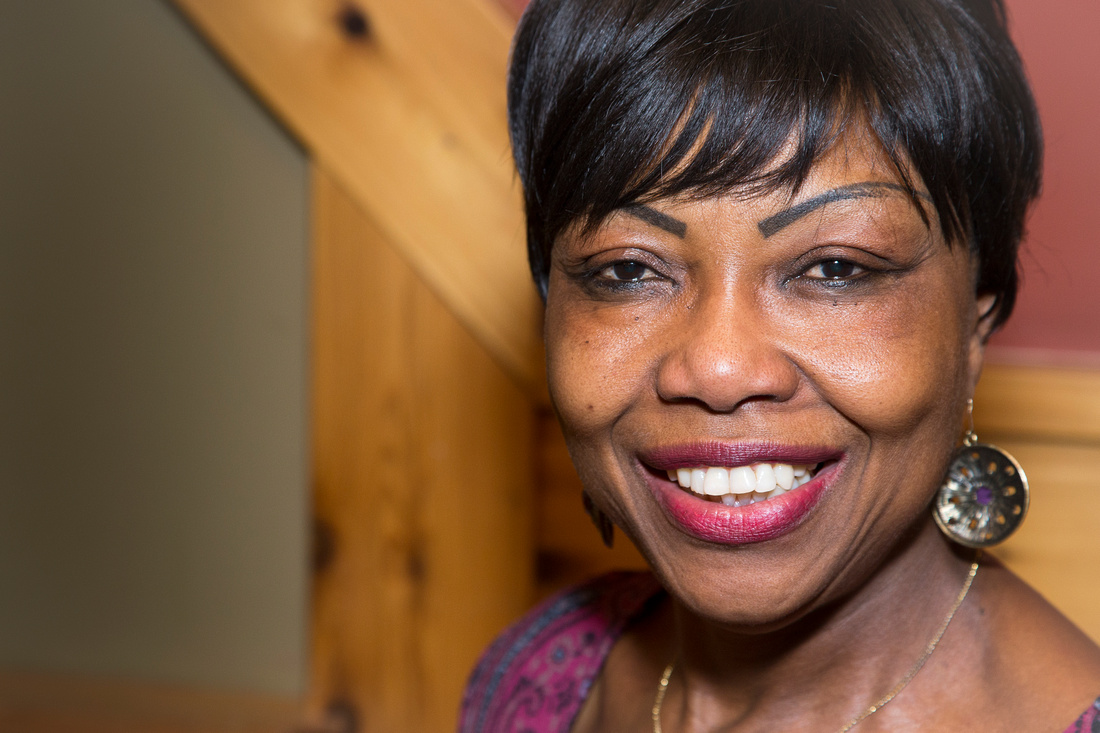
Alice is an immigrant from Sierra Leone. Raised in a poverty, Alice’s family moved to Monrovia, Liberia when she was sixteen in an attempt to find a better life. It was here, at the age of seventeen, that she married her first husband.
After almost losing her life in childbirth, Alice developed a lifelong passion to help young pregnant women and completed her training as a midwife. Alice struggled through thirteen years of an abusive marriage until she finally found the courage to walk away from the relationship.
Alice married a second time. Albert was a senior government official, who would serve as Liberia’s Ambassador to Sierra Leone. As the civil war continued in Liberia the government fell and Albert was removed from his post as Ambassador. As a prominent leader of the opposition, Albert was assassinated on the morning of May 1, 1992.
Fearing the very real possibility that her family might targeted next, Alice sought asylum in the U.S.A.. She approached the United Nations and in December, 1993 she landed in Philadelphia. Alice, now a refugee, arrived in America with her children and $20 in her pocket. Without any sense of bitterness, Alice explained, “You never know when humbling times will come.”
At first the family survived on welfare and food stamps. “No one showed us anything,” remembers Alice, they were completely on their own. They had, “no chair, no table, only immediate needs. … No money for diapers, no telephone, they said it was luxury.” Alice notes, “There were challenges doing this, there were bad moments,” but then adds that, “God is so good, I’m sorry for grumbling.”
Within a year Alice trained as a nursing assistant and began working in group homes. Just as Alice had cared for others in Africa she continued to do so in the United States.
After five years in Philadelphia Alice moved to Minnesota where she studied to become an LPN (licensed practical nurse). The week of graduation in 2004 tragedy struck her life once again when her sister died unexpectedly from a brain aneurysm. That summer Alice made her first trip back to Sierra Leone to bury her sister and be with her mother.
Alice’s compassion, drive and focus has remained strong, “All along my dream was to help young women and children.” In 2011 Alice founded Rural Health Care Initiative with a specific focus of reducing maternal and infant mortality rates in Sierra Leone. Alice explains that girls, “get married so early, sixteen or seventeen, and face lots of complications.” A key component of the work of RHCI is the construction of a birth waiting home, a place close to the health care facilities where pregnant women can spend the last few weeks of their pregnancy so they are spared the often long and difficult journey to the clinic after labor begins.
Alice has embraced all that life has thrown at her and continues to give of herself to help others. The construction of the first birth waiting home is well under way and lives are being saved because of Alice’s vision. She is, “so grateful to God that it’s coming to pass.”
]]>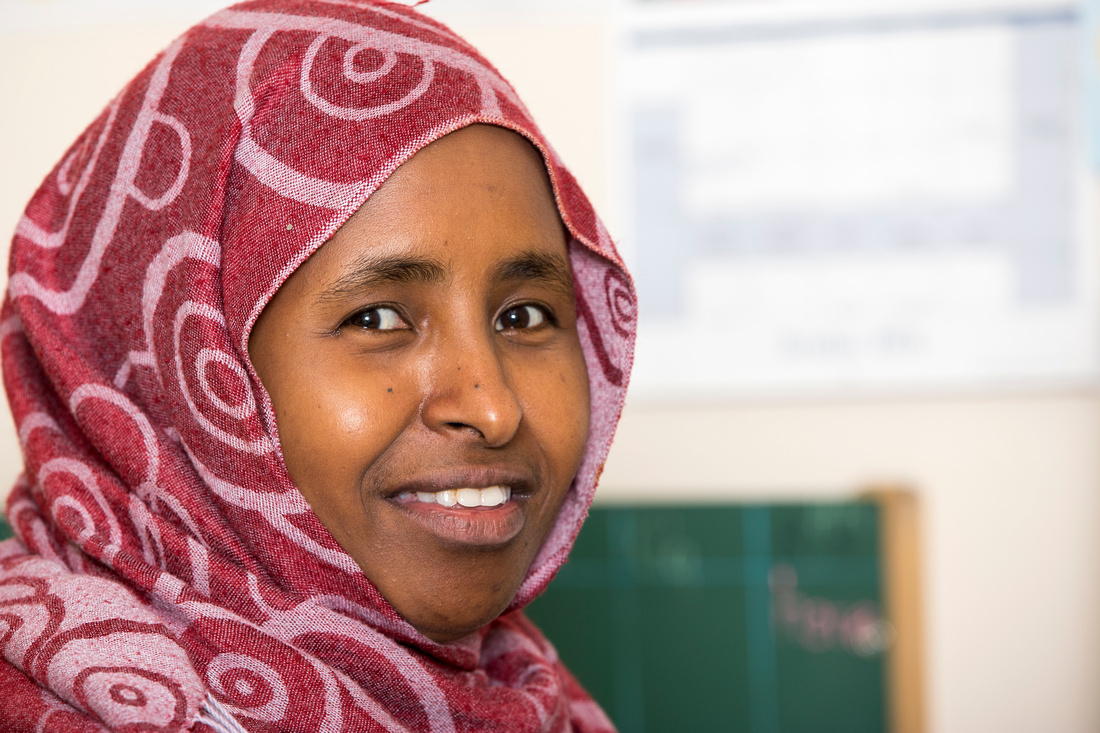
Sahro is a Somali immigrant. Sahro grew up in Mogadishu where her father worked in the import/export industry and her mother was a supervisor in an Italian owned factory. As a child Sahro watched as her father was arrested for his political activism. Following his release she witnessed the taunting he received from the authorities.
In 1991, civil war broke out in Somalia. As inquisitive young people, Sahro and her friends had to see for themselves the damage caused by the fighting. Sahro recounts the sound and sight of the bombs falling on the city as being eerily similar to the images we see on TV from Syria today. It was a devastating time, “most of my family never survived the war.”
In 1992, Sahro and some family members abandoned their home in Mogadishu and went to a refugee camp outside of Nairobi, Kenya. They were displaced people with nowhere to call home. A year later, Sahro, along with her mother, and some of her siblings and cousins were, “very lucky to get sponsored.” So in November, 1993 they arrived in St. Louis under refugee status. It was the beginning of a new life, in a new culture. Tragically Sahro’s father wasn’t part of the group and within a year he died from a brain tumor.
Upon arrival in the United States Sahro had three goals, “get a job, go to school and help people back home.” Sahro accomplished this and more. In 1995 Sahro was married and has five children. Her oldest son is in college studying and playing football for a division two school while her youngest attends a local elementary school. Tending to the needs of her family Sahro also began to pursue studies in nursing but shifted her focus and graduated college with a degree in business and accounting.
Sahro’s career and life are devoted to advocacy. When working as a security guard she was the person to walk other women to their vehicles, ensuring their safety. After moving to Minnesota Sahro took a job in community outreach, teaching workshops on medical and mental health issues for the Somali and African American community. Today she continues her advocacy work in the local school district where she serves as the Somali Cultural Liaison in a school that is approximately one third Somali, one third hispanic and one third caucasian.
“It’s challenging,” Sahro explains when talking about what it’s like to live as a Muslim woman in America. “Before 9/11 we didn’t see it as a problem. … After 9/11 we were the outsiders.” As a citizen of the United States she experienced a lot of name calling, even being called a “terrorist” in front of her young children, “just because I wear a headscarf.” She would note that this is “exactly what ISIS wants.” Before adding, “I don’t think ISIS knows the religion!”
Sahro is a strong, courageous, advocate for herself and others. She wants us to understand that “we’re all the same, same wants, same needs. … We want our kids to go to college, graduate, be successful, find the right way. We want our kids to be safe and not hang with the wrong people.”
]]>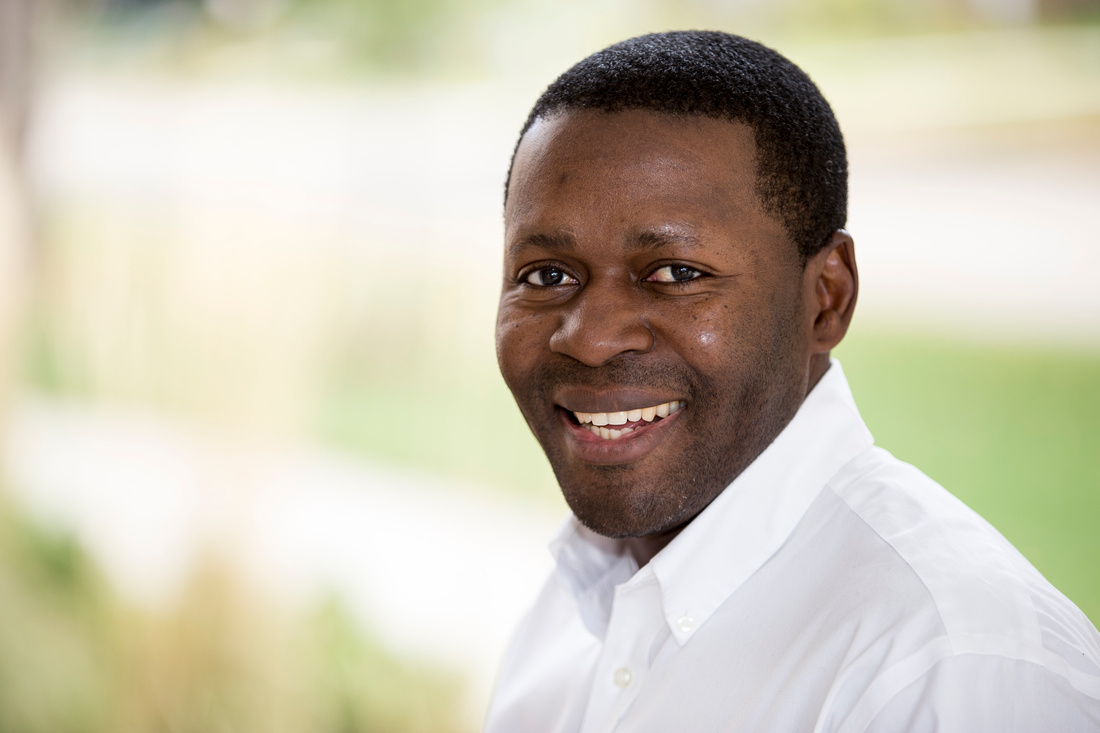
Hassan is a Ugandan immigrant. Born in Kampala, Hassan was raised in what he describes as a tough part of the city. Life was not easy growing up and violence on the streets was a common scene. Today Hassan says approximately 80% of the kids he grew up with are now dead as a direct result of violence, drugs and the AIDS pandemic.
Hassan cites boxing as the key element in his life that allowed him to escape the dangers of the city. In order to be viewed as “someone” in the neighborhood, you either joined the army or became a boxer. When reflecting on the dangers of the city, he explained that youth need “boxing not church in tough neighborhoods.” The church was viewed as unable to connect adequately with people, while the boxing club always felt like a safe haven from the streets.
Hassan, small in stature but big in heart, boxed in the featherweight division and would go on to train with the Ugandan national squad. In 1998, Hassan arrived in the United States to debut as a professional boxer. The fight would go the distance with the judges awarding Hassan a unanimous victory.
A couple of years later Hassan was sponsored by a New York boxing club to come, live and work in the U.S.A.. After becoming a permanent resident, Hassan moved to Minnesota. Working a factory job, he continued to train as a boxer. The schedule he was keeping prohibited him from attending school so a friend suggested he make a career change. He qualified as a Certified Nursing Assistant and then as a Trained Medical Assistant.
Ten years ago, Hassan started working at a senior care facility and has found his life’s calling. Talking of his time in the factory he says, “a machine doesn’t talk to you, or care how you treat it” but now he says, “I don’t feel like I’m working, you just help people out.”
As Hassan shares about his work with seniors he does so with great gentleness, humility and joy. “This is what life is all about.” He adds, “When on the street you take life for granted.” Which is so different from the relationships Hassan has developed with the folks who live at the senior care center where, “they trust you, you can’t just get that anywhere.”
As Hassan shared stories of the people he has known over the last ten years it is clear that he is a man who puts people first. His calling is larger than just being part of the medical team, his calling serves as an extension of the family where he can befriend and spend time with residents when family is out of town or unable to make regular visits. Perhaps the most apt way to describe Hassan is as a man who takes the word, “Love you neighbor as yourself,” to heart.
]]>
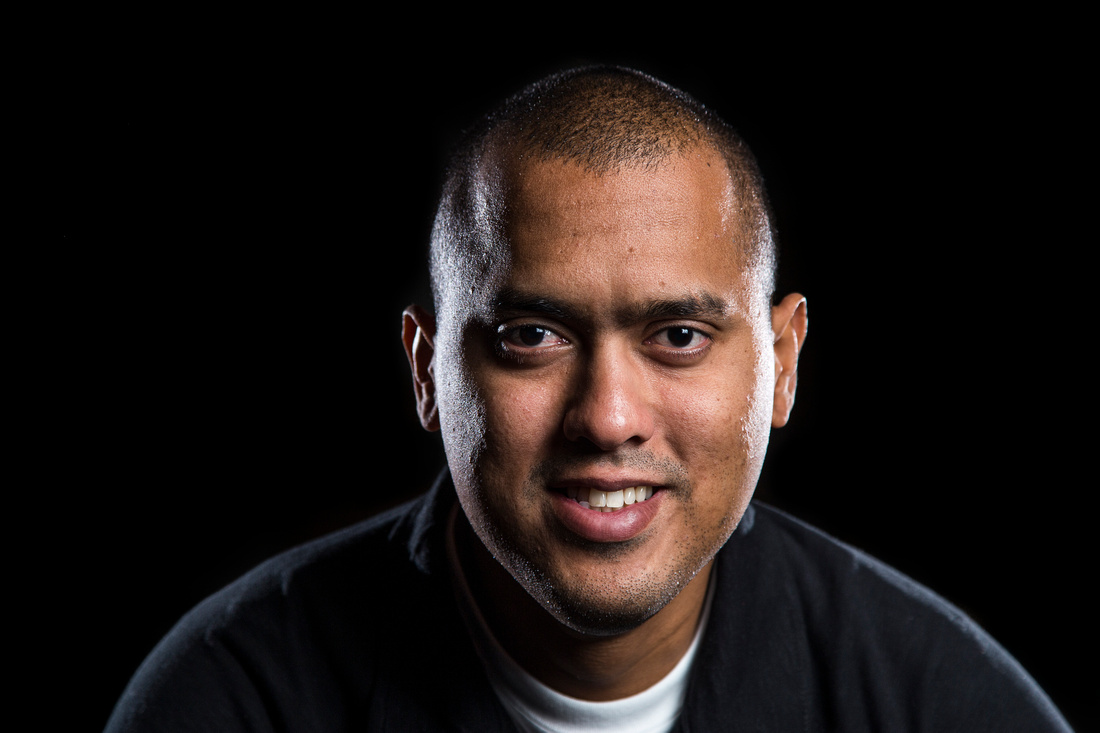 Octavio is a Panamanian immigrant. The third of four children Octavio was raised Rio Piedras just outside the city of Colon. He describes his upbringing as “comfortable,” there was nothing he lacked and his family was very close.
Octavio is a Panamanian immigrant. The third of four children Octavio was raised Rio Piedras just outside the city of Colon. He describes his upbringing as “comfortable,” there was nothing he lacked and his family was very close.
To provide for the family his mother worked as a school principal and his father as a bus driver. Following high school, Octavio went to work for his father, helping collect fares and providing security on the bus. At his time his father rented the bus he drove. Eventually Octavio and his wife would help his father purchase the bus he now drives.
One afternoon after he left work he was walking by a neighbor’s house when he saw an American girl sitting reading a book. Not being the shy type he walked over to speak to her and invited her on a date to the ocean. Mary, who was serving with the Peace Corps, accepted the invitation and the two started dating. After two years of dating, Mary’s time with the Peace Corps ended. Before returning to the United States Octavio and Mary decided that they wanted to spend the rest of their lives together. In speaking of his love for Mary he is quick to say, “She makes me stronger.” The gift of a committed relationship.
In December of 2005, Octavio arrived in Minnesota on a fiancé visa with $60 in his pocket, no winter jacket, no driver’s license and his grasp of English was almost non-existent. The things we will do for love!
Not speaking English Octavio explained how it was “really, really hard, people talking and you can’t understand.” When he went out he found it frustrating that that people would not look at him, “there was no eye contact,” only acknowledging the people around him. When asked how he overcame this, he explained, “You need to be tough.” You need to be courageous and committed as well.
Octavio went to work in the Quick Lane of Tousley Ford helping perform routine services on cars. He eventually left Tousley to work in the construction industry. Committed to working hard and seeing people treated fairly Octavio became active in his union, LiUNA, where he serves on the board of Local Union 563.
Octavio and Mary have now two children. They are the center of his life with his greatest passion being, “raising my kids well.”
People come first for Octavio as he explained, “You must include other people, the world is big for me.”
]]>
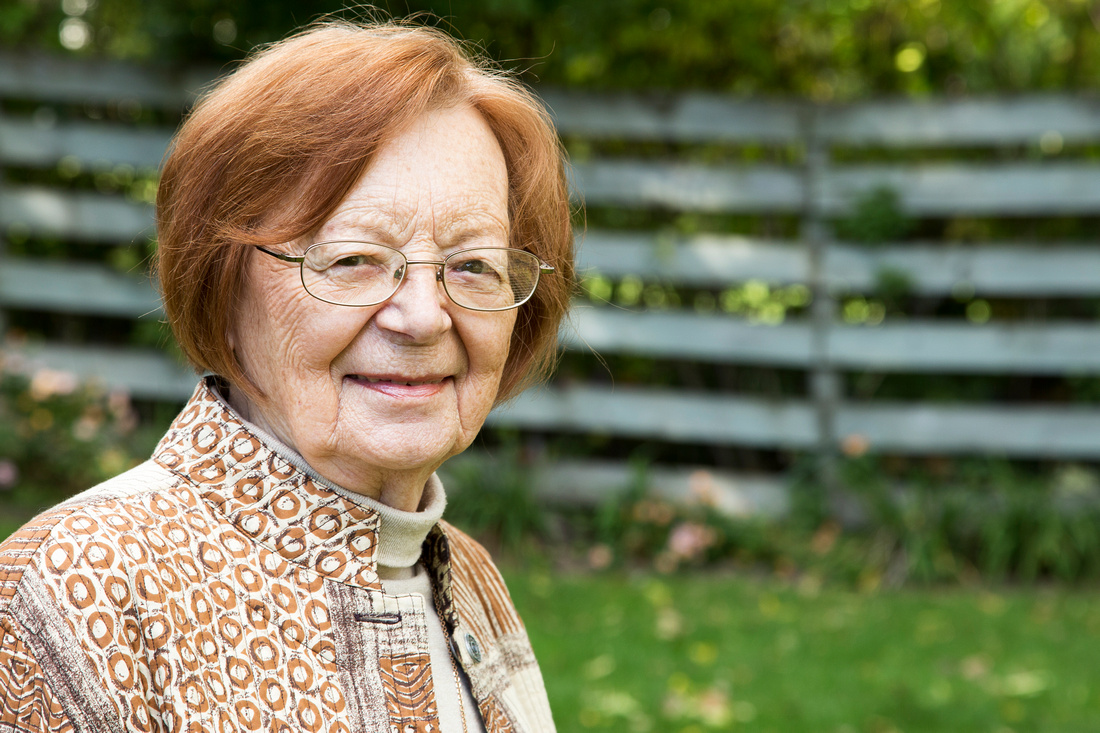 Yvonne is a Polish immigrant. In 1940 there was a knock on their front door and the Nazi officer instructed her to get out of her home. At the age of 8, Yvonne, along with her sister and mother, would spend the war in a forced labor camp. Her mom worked in a munitions factory while Yvonne and her sister worked in the kitchens. For those five years her mother would say to them, “Don’t worry, God will not forsake us.” Her father had been drafted into the Polish army in 1939.
Yvonne is a Polish immigrant. In 1940 there was a knock on their front door and the Nazi officer instructed her to get out of her home. At the age of 8, Yvonne, along with her sister and mother, would spend the war in a forced labor camp. Her mom worked in a munitions factory while Yvonne and her sister worked in the kitchens. For those five years her mother would say to them, “Don’t worry, God will not forsake us.” Her father had been drafted into the Polish army in 1939.
As the war ended their camp was liberated by the Americans. They moved the family to a camp for displaced persons. At this camp they were once again able to go to church. The only option was Roman Catholic and they were a Lutheran family. Yvonne remembers her mom telling them, “There is one God in heaven, it doesn’t matter what building you go to, we pray to the same God.”
With Europe in the throes of being divided between the allies they had to choose between moving west with the GI’s or living under Russian controlled territory. They kept moving.
Yvonne believed her father had died in the war and without a male head of house emigration was closed to them. Eventually, in early 1946, Yvonne’s mom made the decision to return to Poland. They were making preparations for the move when there was a knock on the door of their hut. Her dad had found them. After being liberated by the Russians It had taken him 9 months of searching to locate his family. They were together again but instead of returning to Poland, they headed for Canada.
In Canada Yvonne met a young man who was vacationing in Montreal. As a 15 year old Karl had been conscripted into the Nazi army. They fell in love and married in 1957. Some of Yvonne’s friends demanded to know how she could marry a German. She reminded them of the generosity many Germans showed them while in the camps, “we are only alive because of the Germans.” Grace and forgiveness were at work in her life. Love conquers all.
Yvonne and Karl raised their family in the United States. Karl worked General Electric and Yvonne as a bank teller. Eventually she rose through the ranks to become Vice President for Branch Operations at American National Bank.
Now retired Yvonne continues to share her financial acumen through her volunteer work with the local church where she also sings in the choir.